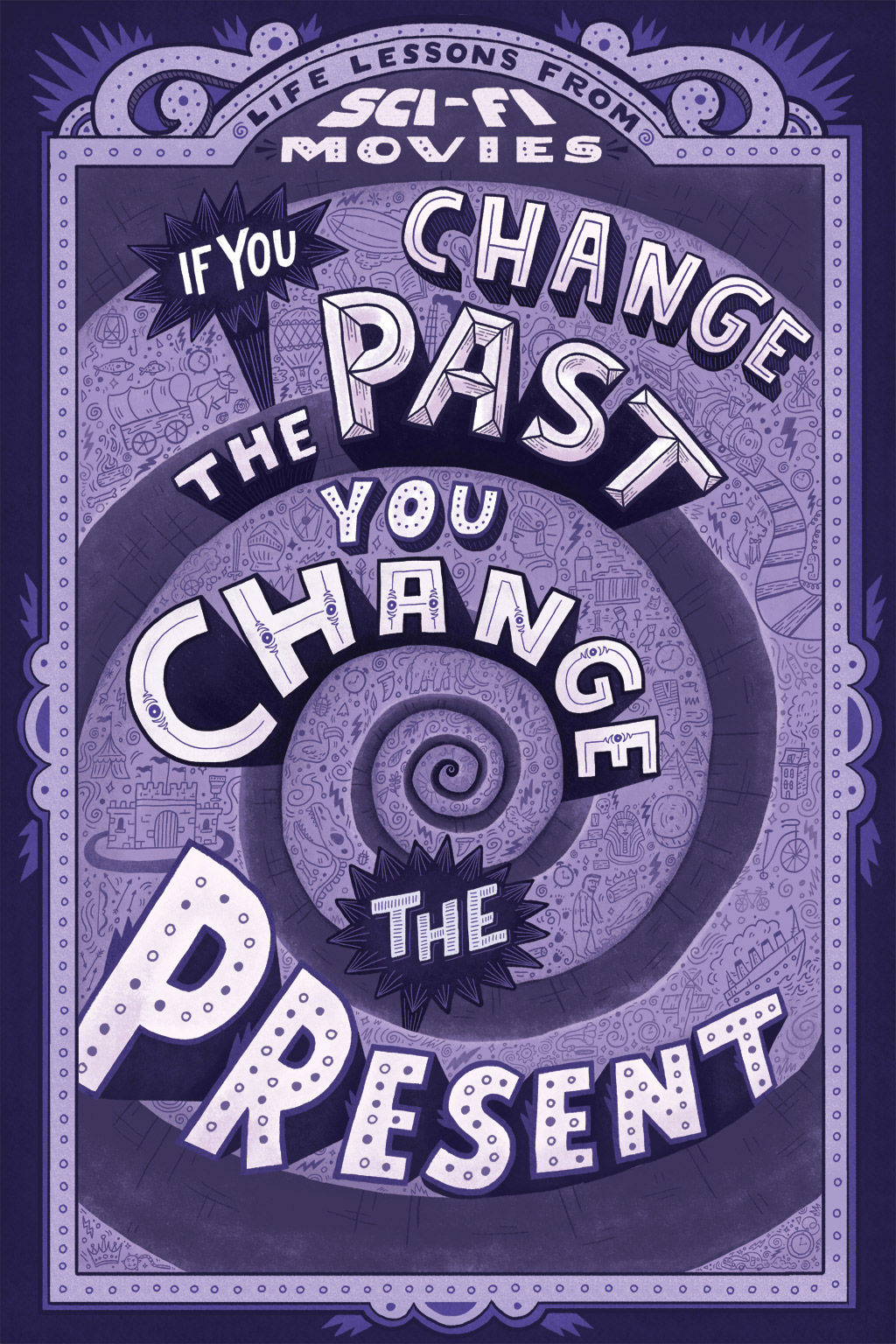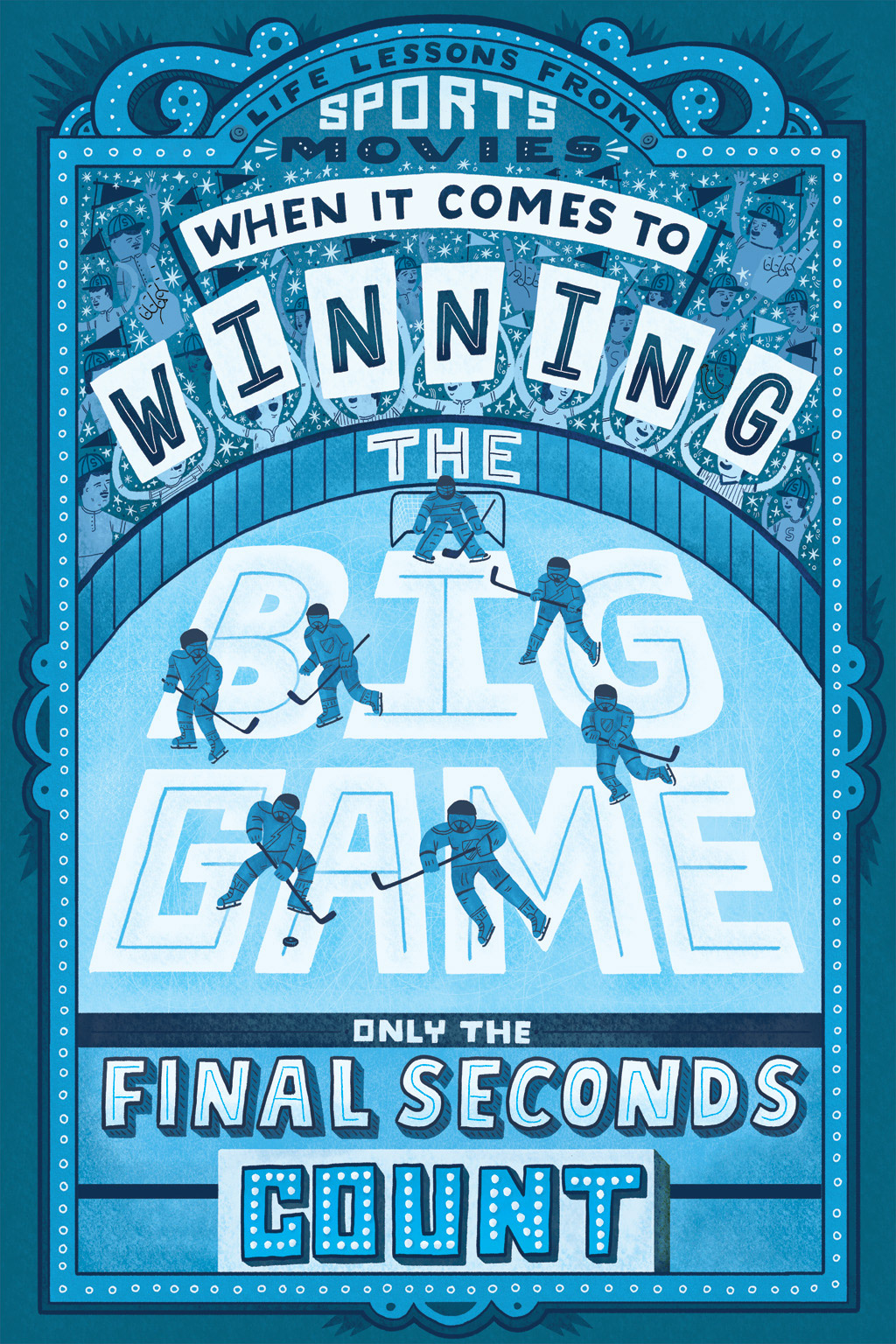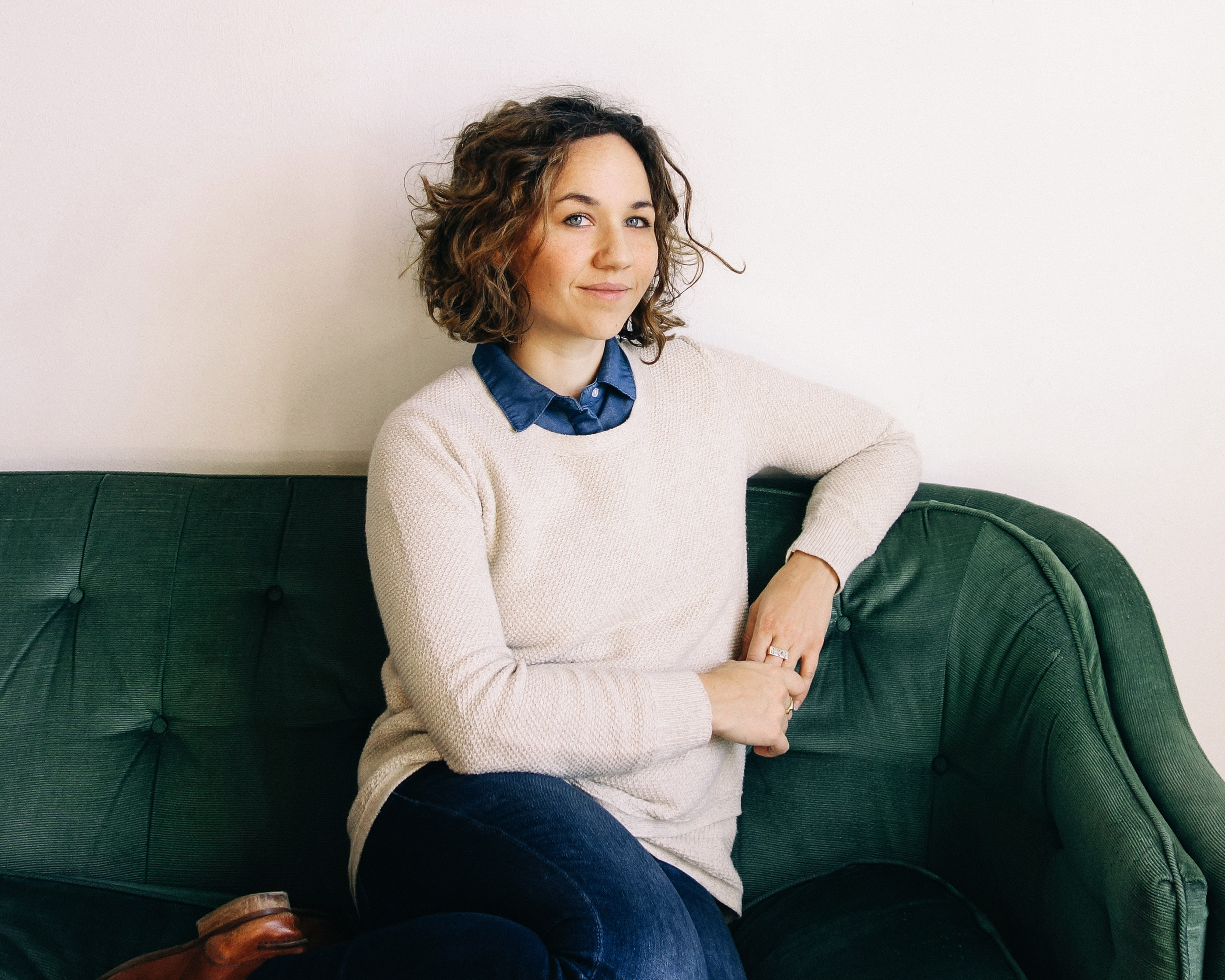
- Interview by Tammi Heneveld November 10, 2015
- Photo by Fred DiMeglio
Mary Kate McDevitt
- illustrator
- letterer
Mary Kate McDevitt is a freelance illustrator and letterer—a self-proclaimed “letterstrator”—based in Philadelphia. Since becoming a full-time freelancer in 2010, she has worked with clients including Chronicle Books, Sesame Street, and Nike, as well as publications like O Magazine, and Mental Floss. She currently teaches illustration classes on Skillshare and has published several books, including her hand-lettering guidebook, Hand-Lettering Ledger.
Describe your path to what you’re doing now. While I wasn’t actually that good at it, I was interested in art when I was growing up. My mom bought me art supplies all of the time, and I always had a sketchbook handy, but I had lot of empty ones that I kind of gave up on. I’d start drawing a tree and think, “Oh, this tree is no good,” and I wouldn’t finish it. I took a bunch of art classes in high school, but even then I still wasn’t the best artist. I remember a girl in my class who could draw a crab perfectly, and I thought, “Ugh! I’m total rubbish.”
Do you come from an artistic family? No. I was the only one interested in art, but I have no idea where that comes from. My mom works as an office assistant, my dad is a financial advisor, and my sister has a PhD in kinesthesiology—I’m at the total opposite end of the spectrum. Growing up, my sister was really outgoing and had a lot of hobbies and interests, so it was easy to keep her entertained. I played sports in high school, but only because I needed something to do. I wasn’t a loser or anything, (laughing) but I needed a low-key activity like art because it fit more with my personality.
After high school, I maintained an interest in drawing and ended up studying graphic design at Tyler School of Art in Philadelphia. I wanted to focus on design because I didn’t have the kind of relationship with fine art that a lot of my friends did. With graphic design, I was really excited about all of the assignments. I became interested in design that involved a lot of illustration, texture, and hand-made elements. The teachers routinely encouraged us to work with our hands, and that really resonated with me.
After graduating in 2007, I landed a job at a design studio right away. In order to take the job, I had to move to Lancaster, Philadelphia, a tiny town out in Amish country. The design studio was small, and we were working on things like flooring catalogs. I found myself itching to work with my hands again, so I decided to start creating art outside of work. In late 2008, I opened an Etsy shop to sell illustrations, paintings, and hand-lettered pieces I made at home. My boyfriend, Fred, is a screen printer, and we made posters in his parents’ garage. It felt good to get back into doing that type of work.
I worked at the studio for nearly two years. During that time, I made Mini Goals Chalkboards, which were little hand-painted chalkboards with hand-lettered motivational phrases. In late 2009, I sent them to a bunch of blogs, and they were featured on sites like Design*Sponge and Design Work Life.
Eventually I received an email from Chronicle Books to turn my chalkboards into a notepad. Chronicle Books was a dream client, and I wondered if I should give freelancing a try. I only had one client, but I could continue making paper goods and put more effort into my Etsy shop. Right after that, it was kind of obvious to my boss that I was losing interest in my work, so I quit my job and moved to Portland, Oregon, in 2010. That was where I decided to really give freelancing a shot.
How did you go about finding work as a freelancer in a new city? I’m terrible at traditional methods of self-promotion. I decided that if I kept pushing my work and telling people about it, then I’d be met with more opportunities. When I first moved to Portland, I turned to social media and said, “I’m here now. Will some art directors please email me?” (laughing) It would be easy to say that I magically started getting clients, but in reality I had been really good about posting my work online, and the way networking happens in Portland is so much friendlier than anywhere I’ve ever been. People met me and offered to email friends at publication. I slowly started receiving editorial jobs for local papers like the Portland Mercury and Willamette Week.
“When I started incorporating hand-lettering and illustration into my work, everything fell into place and I started doing projects I truly felt proud of. When I stopped trying to work in someone else’s style, it finally felt natural.”
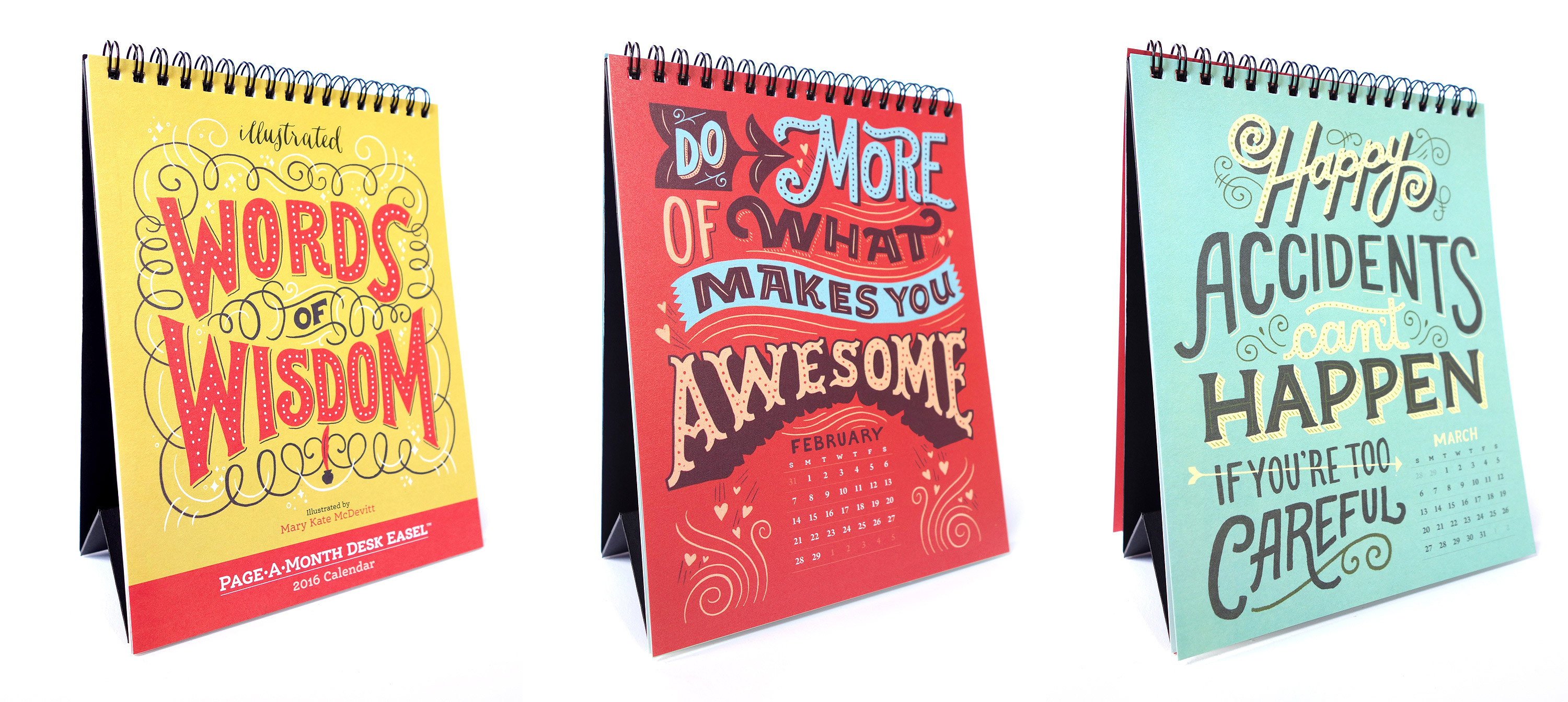
I was also very active in craft fairs and somehow ended up in a lot of art shows, which is a great way to meet people. I attended any event where I could show my work. Over time, I started making logos for small businesses as well as wedding invitations, and posters.
I continued making my mini goals chalkboards throughout that time, which is when chalk lettering started to become popular. I received emails from Rachael Ray Every Day and O, The Oprah Magazine saying that they’d seen my chalkboards and were wondering if I did chalk lettering too. I thought, “Sure, why not?” Then I started being offered bigger editorial projects for other publications like Women’s Day and Cooking Light. Those jobs kicked off my professional portfolio, which enabled me to start landing a lot more client work.
From there, I expanded the kind of work I did and my Etsy shop started slowing down. I had been in Portland for about four years at that point, but couldn’t see myself living there forever. I wanted to be back to the East Coast. I’d always wanted to try living in New York, so my boyfriend and I moved to Brooklyn in early 2013. We rented a small studio apartment and a work studio. I loved it, and I think New York is amazing, but after two years, we moved back to Philadelphia. We bought a house, which was a big reason for choosing to move back, but we also have a lot of close friends here.
Was there an “Aha!” moment when you realized that you wanted to focus on illustration professionally? Making the decision to focus on art wasn’t difficult, but it was nerve-wracking. Whenever someone decides to go to art school, people wonder, “What are you thinking?” But what else are we going to do? I wasn’t the greatest artist, but I couldn’t picture myself doing anything else with my life.
I was initially accepted into East Stroudsburg University in Pennsylvania, but I didn’t know what I was going to major in. At the last minute, I thought, “I can’t do this. I have to go to art school.” I was accepted into Tyler right before the admissions deadline. I realized that being accepted into art school meant that they saw some kind of potential in me, and that maybe it was something I could actually do.
Have you had any mentors along the way? My professor at Tyler, Kelly Holohan, helped me embrace my personal style. Whenever I worked on design projects, I tried to do everything in a slick design-y style. I tried to keep it simple, but it looked ridiculous. When I handed my sketches in to Kelly, she asked, “Why are you changing your work from this?” I sketched out where the type, photos, and vector art would be in the layout, and she said, “This is where your skill is.” When I started incorporating hand-lettering hand-lettering and illustration into my work, everything fell into place and I started doing projects I truly felt proud of. When I stopped trying to work in someone else’s style, it finally felt natural. If no one had told me that, I could have ended up with a terrible portfolio.
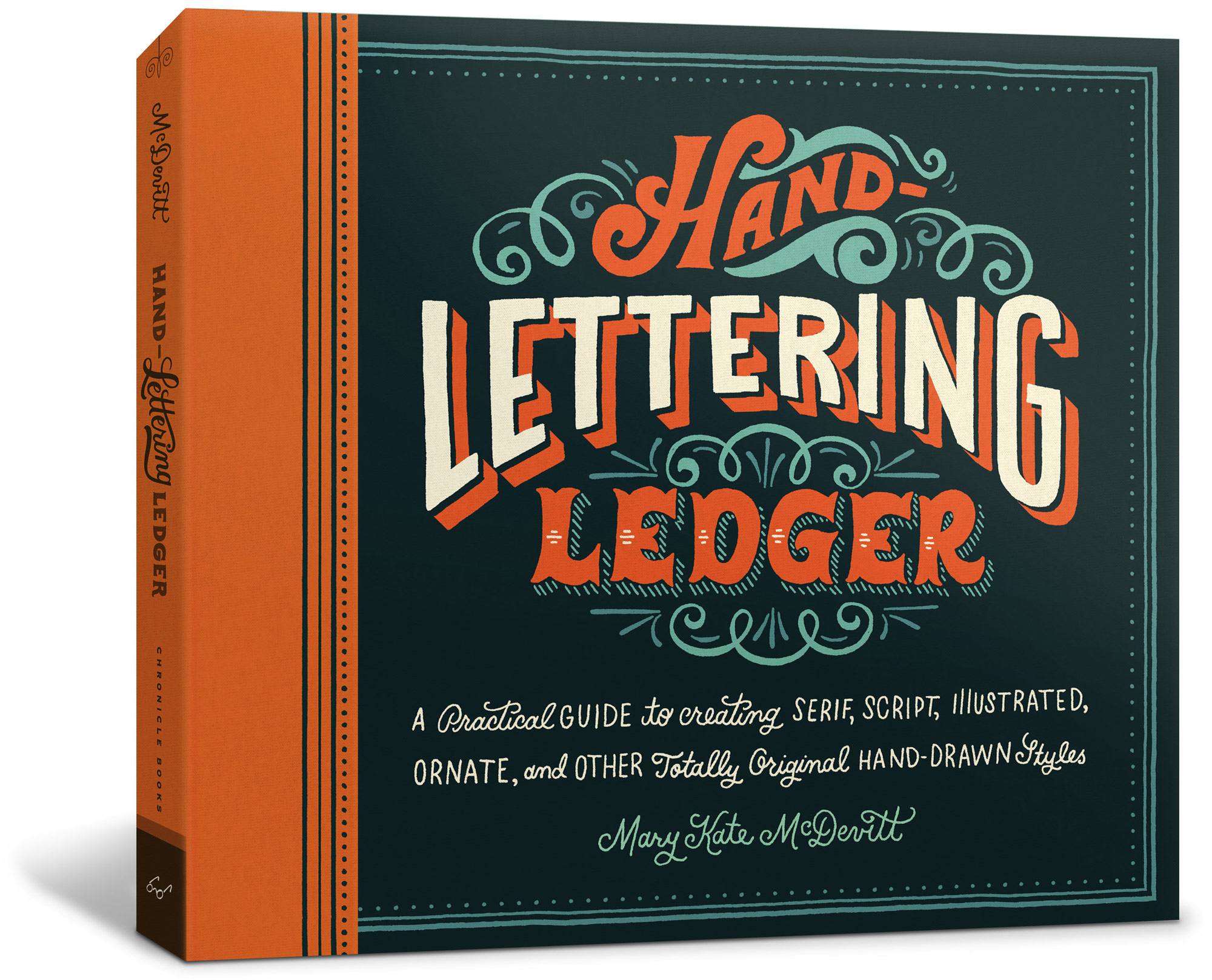
“It’s incredibly important to me to motivate and inspire people to learn new skills and do what they love. I want people to see what I’m making and feel the desire to create things of their own.”
Have you taken any big risks to move forward? Deciding to become a full-time freelancer was definitely risky. Not only did I abandon a steady job and a comfortable salary, but I moved across the country to a city where I didn’t know anybody. I was living off a small savings and had very few clients, so it felt like a huge risk to start freelancing so abruptly. The first few months were rough, but I wanted to prove—not only to myself—but everyone back home that I could do it. I remember eating ramen while talking to my mom on the phone, like, “I’m doing great! I’m working on logos and stuff,“ and I was actually working on my own logo. (laughing) But if there’s one place to be when you’re a poor freelancer, it’s Portland.
Do you feel a responsibility to contribute to something bigger than yourself? I don’t know. I teach Skillshare classes because sharing knowledge is important. Last year I was brought in for six days to teach at the University of Arts in Philadelphia, and I did a small workshop at Moore College of Art and Design. Next semester I’m going to teach at Tyler, which I’m really excited about. I want to keep sharing my knowledge, skills, and passion to inspire people to follow their own paths and create work they love.
It seems like a lot of the books you publish have inspiring and encouraging themes. Would you consider that giving back on a certain level? Definitely. It’s incredibly important to me to motivate and inspire people to learn new skills and do what they love. I want people to see what I’m making and feel the desire to create things of their own. I try to work off of my own process and encourage others to make it their own. My process isn’t too crazy, so when I share it with people I think it helps them feel more confident to build their own process and style.
You’ve done a massive amount of work. Are you creatively satisfied? Never. I’m working on a pretty diverse set of projects right now: book covers, advertising campaigns, and editorials for magazines. But the other day I had an hour of free time and decided that I wanted to make something for Halloween. There isn’t a moment when I’m satisfied with everything I’m working on. I’m constantly trying to make new stuff. I love that I’m able to do what I love for a living, so in that sense I am satisfied. But I’m constantly thinking of new projects. You have to keep that feeling up, otherwise you’re in trouble.
“There isn’t a moment when I’m satisfied…I love that I’m able to do what I love for a living, so in that sense I am satisfied. But I’m constantly thinking of new projects.”

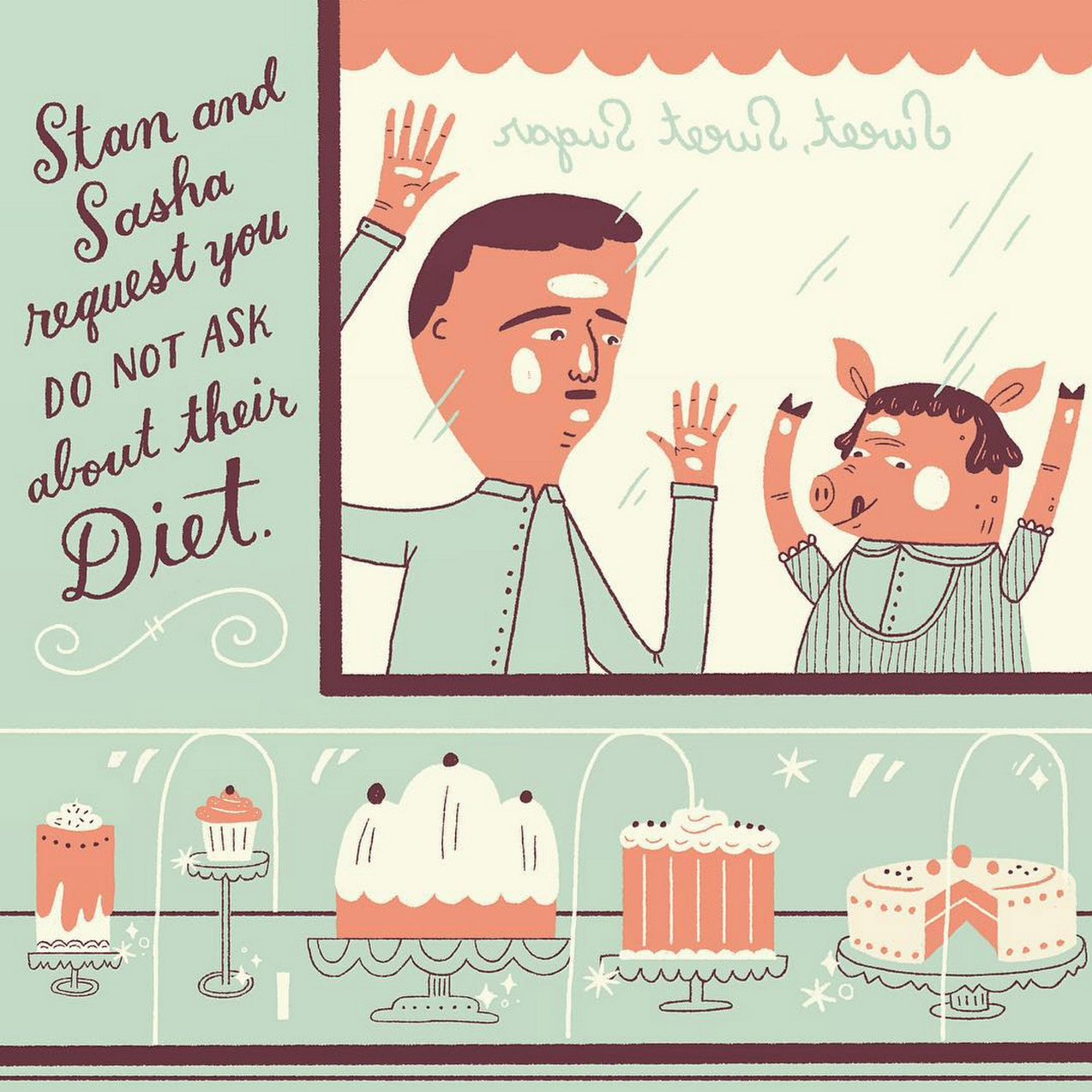
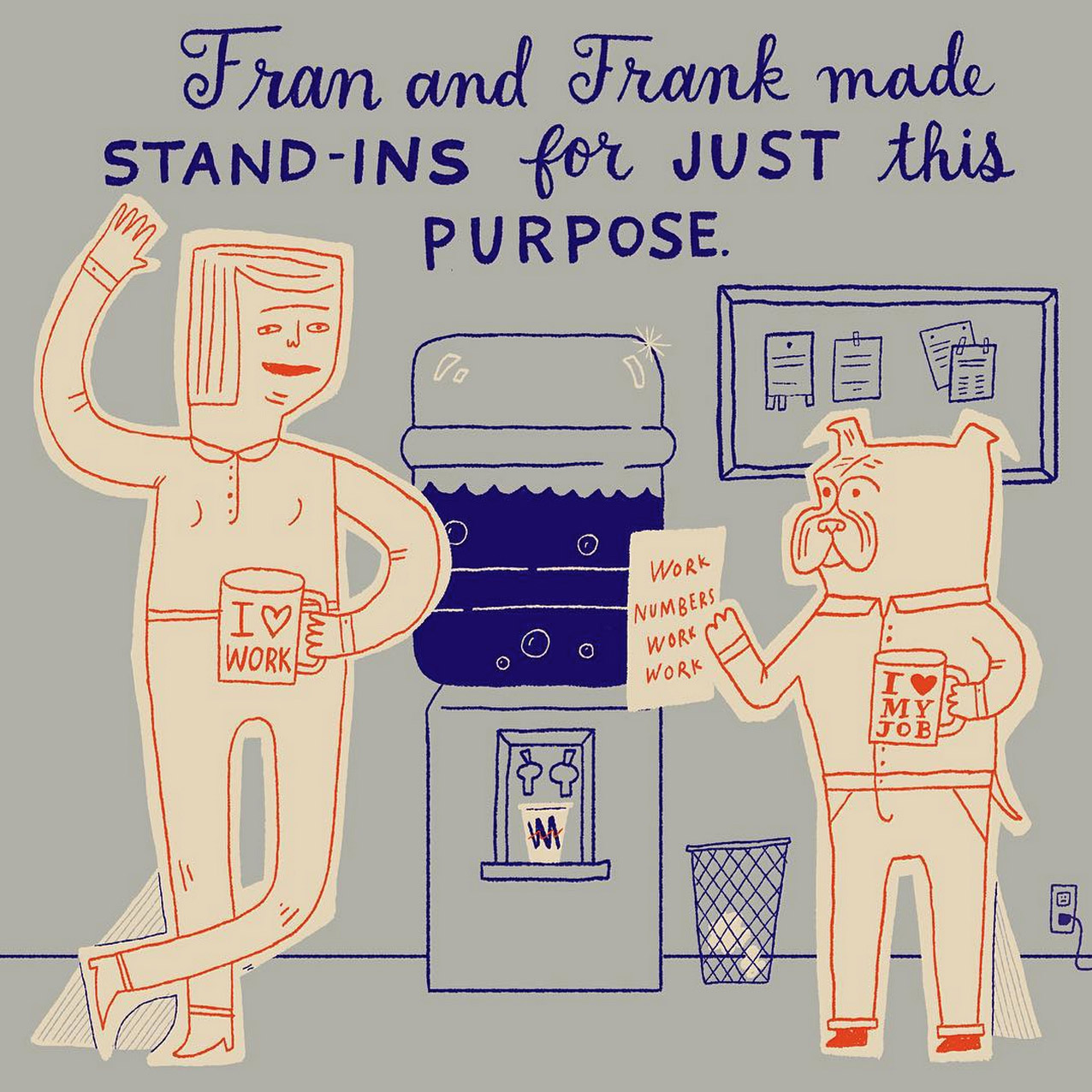
What are you working on next? I’ve been so focused on lettering lately that now I want to do more illustration. Last summer I did the 100-Day Project. My project was 100 Days of People and Pets. For each one, I wrote a six-word story to pair with an illustration of a person and their pet doing a different activity. It was a way to do story-themed illustrations without needing too much of a concept. The 100-Day Project was incredibly challenging because 100 is more than you think! When my friend initially talked me into doing it, I came up with five ideas right off the bat and thought, “Pfft—piece of cake!” Nah, dude.
After the 100-Day Project ended, I received emails from publishers I’ve previously worked with asking if I wanted to make a children’s book based on it. In the next few years, I think I’d like to make that happen. Anyone who starts out in illustration is all about children’s books because that’s what we grew up understanding illustration to be, so it’s nice to think that that could be a reality.
I’m also working on a new book that’s similar to the Hand-Lettering Ledger, but focused more on illustration. I’m really excited about it.
If you were to give advice to a young person interested in illustration, or someone interested in becoming a freelancer, what would it be? Work on the projects that you want to work on. It sounds obvious, but if you want to get into branding, there’s a way of doing personal branding projects that makes it seem fun. Personal projects are amazing—I recommend the 100-Day Project to people all the time! Do you want 100 new portfolio pieces? Take it on! Face that challenge. It’s incredibly easy to want to focus and do the work you want to do, but it’s so hard to actually do it.
When I decided to move across the country and jump into freelancing full-time, it wasn’t comfortable. Had I been in a more comfortable position, I might not have been as focused. Being a little impatient can be helpful. A lot of people say, “Be patient, create work under the covers, and don’t tell anyone about it until you have an amazing portfolio.” That could work, too, but I think putting your work out there and sharing your enthusiasm for the type of work that you do is very important.
And by doing so, hopefully you will attract clients who want to hire you to do more of what interests you. Exactly. On the other hand, there are a million side projects out there now. That is something to keep in mind if you’re just starting out: the work you do needs to be something that you’re truly interested in. If you only make work because you’ve seen similar projects and think others will like it, then people will scroll right past it. But if you do something that feels undeniably you, people will notice.
What does a typical day look like for you? I wake up, make coffee, and check my emails to see if there’s anything pressing—mostly to see how long I can sit with my cat, Peppy Mew Mew, while I drink coffee. (laughing) If I have an urgent email, I go into the studio much earlier, around 9am. When I arrive at the studio, I look through more email, write lists of what I need to work on, and prioritize everything. I try to sort my calendar out by putting deadlines on it and ensuring that everything is up to date. I typically have 10 jobs going on at the same time—I try not to have that many, but most of them have pretty short deadlines.
After I get organized, I’ll finish some sketches that need to be sent off or draw loosely as a warm-up—I try not to jump into doing final work in the mornings. Later, I’ll browse Twitter and see if there’s anything I can Instagram. Afterwards, when I want to start working on a larger project, I’ll put a TV show, like Law & Order or The IT Crowd or Peep Show, on in the background to help me time my work. I’ll work on one project for a few hours, and then spend a few hours on another before I leave the studio around 7pm.
Do you try to keep regular office hours? I try to keep it as regular as possible. If I work until 2am, it’s because it’s a totally crazy project. I’m usually not up that late. When I first started freelancing, I worked out of my apartment, but having a studio is so important for my process now. When I come to my studio, I feel more focused and can keep more regular hours. Now that’s it’s autumn, I go home around 7pm; but in the summer I might be working as late as 10pm because it’s still light out.
Mondays are when I do invoicing and checking up on payments. I don’t have an agent, so all of that is on me.
That’s a lot of work. It is, especially when there are multiple projects happening at once. It’s up to me to make sure that the invoices are sent and that I’m getting paid on time. Sometimes I have to remind myself that I’m running a business because it can be hard to do, but I don’t mind that part of the job.
I have done a couple trial projects with agents who approached me, but they didn’t negotiate any more money than I would have myself. Pricing is such a nightmare. People often ask me for advice about it—maybe it’s because they know I don’t have an agent, so it’s something I deal with a lot. It’s not such guessing game anymore because I’ve learned along the way. Editorial pricing is easy because it’s pretty standard, but when you get into advertising, it’s a whole other set of numbers. For example, usage for one magazine ad for one year could be anywhere from $1,000 to $10,000. Sending out quotes and negotiating usage rights is intense: you really need to watch your back and the terms you use.
I have a book called Graphic Artist’s Guild Handbook of Pricing and Ethical Guidelines, which anyone who is freelancing probably has or should have. It includes a lot of helpful information about contracts and pricing, and I referenced it a whole bunch when I first started.
Who are some of your favorite illustrators working today? My friend, Melissa McFeeters, makes awesome paper cut illustrations. My other friend, Mike McQuade, does amazing conceptual illustrations for the New York Times, and I love his work; and his wife, Nicole McQuade, does beautiful photography. The list could seriously go on for miles, but other illustrators I’ve been admiring lately are Danielle Kroll, Meg Hunt, Darren Booth, Julianna Brion, Tom Frost, and Louise Lockhart.
When you take on a new project, is there anything special that you do to jumpstart your creative process? Does it come easy to you, or do you have to work at it? Most of the time it feels pretty natural. When I go over a brief for a job, I already know the direction because it’s usually based on work I’ve already done. But sometimes I’ll work on a project that just won’t come together. I recently worked on sketches for a book cover and the client wanted very detailed, Rube Goldberg-style lettering. That isn’t something I usually do, and I made so many drawings before it felt right. I presented my final drawing, and now I’m working on a slight revision because they want it to be a little more simple. The original cover design would have been so cool, but I’m happy because now it looks really amazing. I don’t always have super challenging projects that force me to work in new ways, but those projects are important. You need a kick in the butt every now and then.
“If you only make work because you’ve seen similar projects and think others will like it, then people will scroll right past it. But if you do something that feels undeniably you, people will notice.”

